Miss a detail with amoebae and things go sideways fast-mislabel a harmless commensal as a pathogen, or hesitate with a warm-lake headache that needs ICU meds now. This guide gives you a clear, practical playbook: how to recognize the syndromes, order the right tests, start evidence-backed treatment without delay, and keep patients safe after discharge. It reflects 2025 clinical practice with notes that fit busy care in Australia and beyond.
TL;DR
- Colitis or liver abscess: think Entamoeba histolytica; treat tissue infection first (metronidazole/tinidazole), then a luminal agent (paromomycin/iodoquinol) to clear cysts.
- Rapidly fatal meningoencephalitis after warm freshwater exposure = Naegleria fowleri until proven otherwise; start amphotericin B + miltefosine-based combo immediately and manage ICP aggressively.
- Painful keratitis in a contact lens wearer or after water exposure: start biguanide drops (PHMB/chlorhexidine) hourly; don’t wait for culture; be cautious with early steroids.
- Do not rely on stool microscopy alone for E. histolytica; use antigen or PCR to distinguish from E. dispar.
- Send reference-lab PCR for free-living amoebae; early calls to infectious diseases/ophthalmology/neurocritical care save lives and vision.
Recognize patterns fast: syndromes, red flags, and first-hour moves
Clinically, Amoeba infections cluster into three practical buckets: intestinal/hepatic disease (mostly Entamoeba histolytica), central nervous system disease (free-living amoebae like Naegleria fowleri, Acanthamoeba spp., Balamuthia mandrillaris), and ocular/skin disease (Acanthamoeba keratitis, cutaneous lesions). Map the presentation to a bucket, then move on testing and treatment in parallel.
Bucket 1: Intestinal and hepatic
- Dysentery or subacute colitis after travel, migration, or MSM exposure; low-grade fever common; tenesmus possible.
- Right-lobe hepatic abscess: fever, RUQ pain, tender hepatomegaly; often solitary lesion in younger men; stool may be negative.
- Red flags: severe dehydration, peritonitis, toxic megacolon, large left-lobe abscess (risk of rupture).
Bucket 2: CNS
- Fulminant meningitis/encephalitis 1-9 days after warm freshwater exposure (lakes, rivers, poorly chlorinated pools, geothermal spas) → suspect Naegleria fowleri.
- Subacute focal neuro deficits, headaches, seizures over weeks to months → think Acanthamoeba/Balamuthia granulomatous amebic encephalitis (GAE).
- Red flags: very high ICP, rapid decline, hyponatraemia, CSF neutrophilic pleocytosis with very low glucose in PAM.
Bucket 3: Eye/skin
- Severe eye pain out of proportion to exam, photophobia, ring infiltrate in a contact lens wearer-Acanthamoeba keratitis until proven otherwise.
- Chronic, violaceous, ulcerative skin plaques-can precede or accompany disseminated Acanthamoeba/Balamuthia.
First-hour moves (don’t overthink-act):
- Stabilise ABCs; for suspected PAM (Naegleria), start empiric amphotericin B + miltefosine-based combo immediately while you call ICU/neuro and the reference lab.
- Order syndromic tests in parallel (see workup section). For suspected E. histolytica, start metronidazole or tinidazole now if moderately to severely ill.
- For suspected Acanthamoeba keratitis, start PHMB 0.02% or chlorhexidine 0.02% drops hourly day/night; consult ophthalmology urgently.
- Escalate early: infectious diseases, ophthalmology, neurosurgery/ICU as indicated.
- Document exposures: freshwater, neti pot use, contact lens hygiene, travel, sexual exposures, immunosuppression.
Heuristics that help in the moment:
- Amoebic liver abscess often has a “single right-lobe lesion” pattern with elevated alk phos; treat first, aspirate only if rupture risk, poor response at 72 hours, or diagnostic doubt.
- Stool microscopy can’t reliably distinguish E. histolytica from E. dispar-don’t base therapy on it alone.
- PAM mortality is >95% without rapid therapy; give amphotericin B early rather than waiting on PCR.
- Acanthamoeba keratitis pain is usually out of proportion; a classic ring infiltrate is a late sign-start biguanides even before lab confirmation.
“Microscopy alone cannot differentiate Entamoeba histolytica from nonpathogenic species such as E. dispar; antigen detection or molecular methods should be used to confirm invasive disease.” - CDC Parasitic Diseases Guidance, 2024
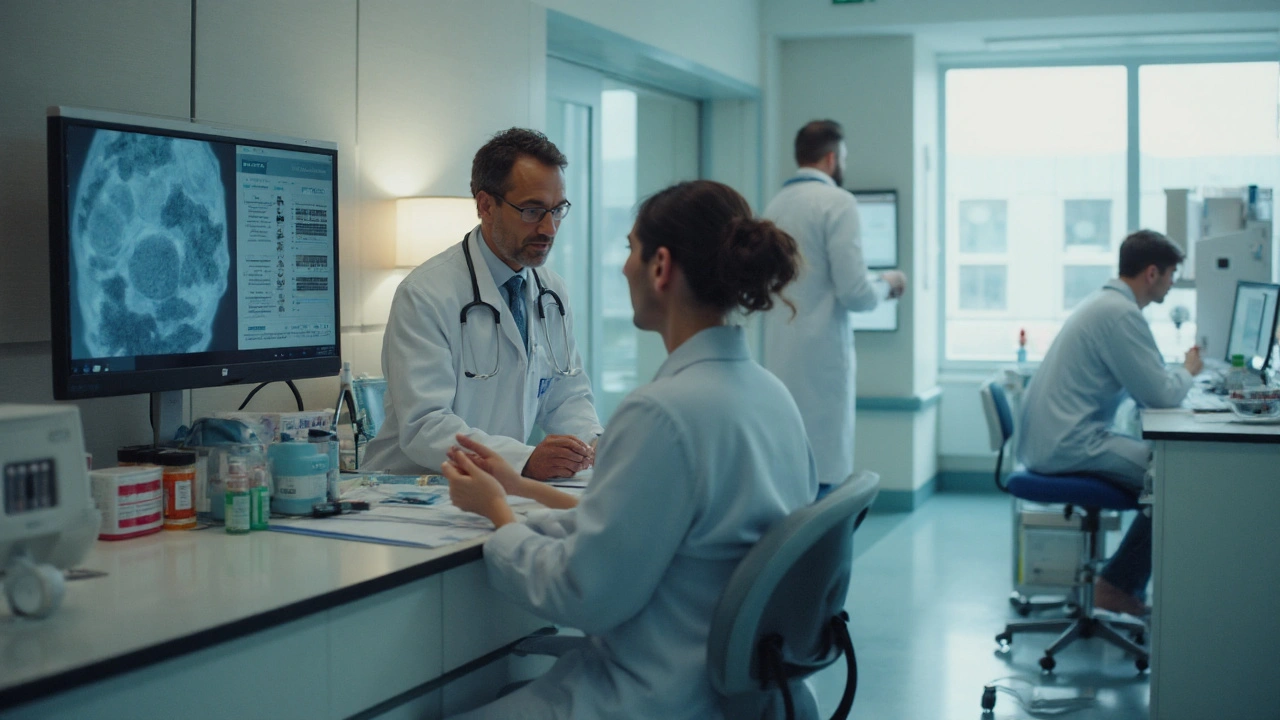
Diagnostic workup that won’t waste precious time
Order tests that change decisions today. Use antigen/PCR where available, and ship specimens to a reference lab for free-living amoebae. Keep imaging and procedures focused on risk and yield.
Intestinal and hepatic (E. histolytica)
- Stool testing: request E. histolytica antigen or PCR. Send 2-3 specimens on separate days if symptoms ongoing; include O&P but do not rely on microscopy alone.
- Bloods: CBC, LFTs (alk phos often elevated), CRP. Consider HIV testing if appropriate.
- Imaging for suspected abscess: ultrasound first; CT if equivocal or complications suspected.
- Serology: helpful in hepatic abscess (often positive after the first week), less useful in isolated colitis.
- Aspiration: reserve for left-lobe lesions (rupture risk), diagnostic uncertainty (rule out pyogenic, echinococcal), or failure to improve after 72 hours of therapy.
CNS: PAM vs GAE
- CSF in PAM (Naegleria): neutrophilic pleocytosis, very low glucose, high protein; wet mount may show motile trophozoites if processed immediately by an experienced lab.
- CSF in GAE: lymphocytic or mixed pleocytosis; protein high, glucose normal/low.
- Definitive testing: PCR of CSF/brain tissue for Naegleria/Acanthamoeba/Balamuthia through a national reference lab. Consider metagenomic NGS where available.
- Neuroimaging: PAM often diffuse cerebral edema early; GAE shows multifocal ring-enhancing lesions.
- Tissue diagnosis: brain biopsy may be necessary in GAE when PCR is delayed/negative and imaging is suggestive.
Ocular and cutaneous
- Acanthamoeba keratitis: slit-lamp exam; in-vivo confocal microscopy if available; corneal scraping for culture on non-nutrient agar with E. coli overlay; PCR on corneal specimens.
- Cutaneous lesions: punch biopsy for histology, culture, and PCR (notify the lab).
Turnaround and practicalities matter. Label specimens clearly; tell the lab you suspect free-living amoebae so they prioritise rapid microscopy and PCR routing. In Australia, referral pathways run through state public health labs; elsewhere, coordinate via your national parasitology reference centre.
| Scenario | Key tests | What changes today | Typical TAT |
|---|---|---|---|
| Dysentery/colitis | Stool E. histolytica antigen/PCR; O&P x2-3 | Start tissue-active therapy now if ill; choose luminal agent once E. histolytica confirmed | Antigen 24-48 h; PCR 1-3 d |
| Hepatic abscess | US ± CT; E. histolytica serology; bloods | Empiric anti-amebic therapy; drainage only if large/left-lobe/non-responder | US same day; serology 2-7 d |
| Fulminant meningitis (PAM) | CSF wet mount; CSF PCR (ref lab); MRI | Start amphotericin B + miltefosine combo and ICP control immediately | Wet mount hours; PCR 1-3 d |
| Subacute encephalitis (GAE) | MRI; CSF/biopsy PCR; histology | Initiate multi-drug anti-amebic regimen; consider biopsy | PCR 2-5 d; histology 1-3 d |
| Acanthamoeba keratitis | Confocal microscopy; corneal scraping culture; PCR | Start biguanide drops hourly; avoid early steroids | Cultures 2-7 d; PCR 1-3 d |
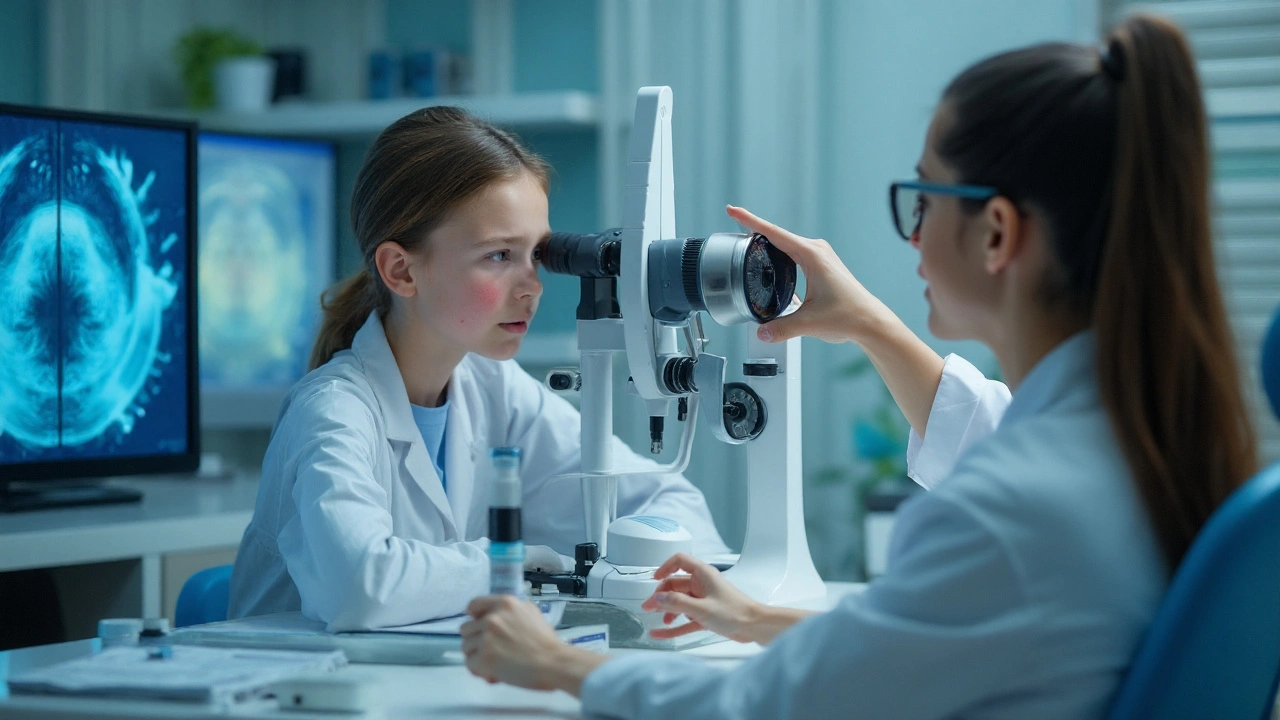
Treatment protocols, prevention, and follow-up (2025)
Start therapy based on the likely syndrome. Don’t wait if the patient is unstable or if delay risks death or vision loss. Doses below are adult starting points; adjust for renal/hepatic function and consult ID/ophthalmology/neurocritical care early. Check your local formulary for availability (some agents require special access).
E. histolytica colitis
- Tissue-active agent (choose one):
- Metronidazole 750 mg PO/IV three times daily for 5-10 days
- or Tinidazole 2 g PO once daily for 3 days
- Then luminal agent (required to eradicate cysts):
- Paromomycin 500 mg PO three times daily for 7 days (or 25-35 mg/kg/day in 3 divided doses)
- or Iodoquinol 650 mg PO three times daily for 20 days
- Supportive care: fluids, electrolytes; avoid antimotility drugs in severe dysentery.
Amoebic liver abscess
- Metronidazole 750 mg PO/IV three times daily for 7-10 days (or tinidazole 2 g PO daily for 5 days)
- Follow with a luminal agent as above
- Drainage: consider if left-lobe, >5 cm with impending rupture, bacterial superinfection, or no clinical response after 72 hours
Primary amebic meningoencephalitis (Naegleria fowleri)
- Start immediately (example regimen, adapt per expert/centre):
- Amphotericin B deoxycholate 1.0-1.5 mg/kg/day IV; some centres add intrathecal dosing in consultation with neuro/ID
- Miltefosine 50 mg PO every 8 h (if ≥45 kg; adjust if lower weight)
- Plus adjuncts often used: azithromycin 500 mg PO/IV daily; rifampin 600 mg PO/IV daily; fluconazole 800 mg load then 400 mg daily
- Aggressive ICP management: EVD, hyperosmolar therapy, head elevation, controlled hyperventilation as bridge, and temperature control; consider targeted hypothermia per ICU protocol
- Coordinate with a national reference lab for PCR confirmation and drug access.
Granulomatous amebic encephalitis (Acanthamoeba/Balamuthia)
- Combination therapy for months, tailored to tolerance and response (common backbones):
- Miltefosine (weight-adjusted oral dosing)
- Pentamidine isethionate IV (monitor for nephrotoxicity, hypoglycaemia)
- Sulfadiazine 1-1.5 g PO every 6 h (or TMP-SMX if sulfa-intolerant)
- Flucytosine 25 mg/kg PO every 6 h (monitor levels and cytopenias)
- Azole (fluconazole, itraconazole, or voriconazole)
- Macrolide (azithromycin or clarithromycin)
- Neurosurgical input for biopsy/lesion management; consider corticosteroids if mass effect, balancing risk.
Acanthamoeba keratitis
- Topical biguanide: PHMB 0.02% or chlorhexidine 0.02% one drop hourly day and night for 48-72 hours, then taper to every 2 hours while awake for weeks, guided by ophthalmology.
- Add diamidine: propamidine isethionate 0.1% or hexamidine 0.1% per ophthalmology.
- Cycloplegic for pain; oral NSAIDs/opioids short term if needed.
- Topical steroids: avoid initially; consider cautious introduction only under specialist supervision after parasitic load is falling.
- Surgical: epithelial debridement can debulk; keratoplasty for perforation or refractory scarring.
Special populations and access notes:
- Pregnancy: avoid tinidazole in first trimester; metronidazole is commonly used when benefits outweigh risks. Paromomycin is poorly absorbed and often preferred as luminal agent.
- Children: weight-based dosing; early ID consultation is wise.
- Drug availability: paromomycin and miltefosine may need hospital pharmacy or special access pathways depending on country.
Common pitfalls to avoid:
- Treating E. dispar like E. histolytica based on microscopy alone.
- Stopping after metronidazole/tinidazole and skipping the luminal agent-sets up relapse and transmission.
- Waiting for PCR before starting PAM therapy-the window is tiny.
- Under-treating Acanthamoeba keratitis with “just” antibacterials or delayed biguanides.
Prevention counseling (quick scripts you can use):
- Water exposure: avoid forceful water up the nose in warm freshwater. Keep your head above water or use nose clips.
- Nasal rinses: use sterile or distilled water, or boil tap water for 1 minute (3 minutes at altitude), then cool before use.
- Pools/spas: proper chlorination matters; hot tubs need vigilant maintenance.
- Contact lenses: no swimming, showering, or hot tubs while wearing lenses; daily rub-and-rinse; replace cases every 3 months.
- Travel: food/water hygiene, handwashing, and safe sex practices reduce enteric risk.
What the numbers say (why speed matters):
- E. histolytica causes millions of infections annually worldwide, with tens of thousands of deaths-most in low-resource settings (CDC, WHO).
- Naegleria fowleri PAM is rare but often fatal; US reports average 0-8 cases per year with case fatality above 95% without rapid therapy (CDC 2024).
- Acanthamoeba keratitis clusters in contact lens wearers; incidence varies by region and water quality, but vision loss risk is substantial without early biguanide therapy (American Academy of Ophthalmology, 2024).
Mini‑FAQ
- Do I need both a tissue-active and a luminal agent for E. histolytica? Yes. Metronidazole/tinidazole treats invasive disease; paromomycin or iodoquinol clears intestinal colonisation and prevents relapse.
- When should I aspirate an amoebic liver abscess? If left-lobe location, very large with rupture risk, bacterial superinfection suspected, or no clinical improvement within 72 hours of therapy. Routine aspiration isn’t needed when classic features and rapid response are present.
- Can I use steroids in suspected Acanthamoeba keratitis? Not upfront. Add only under specialist guidance once anti-amebic therapy has begun to work.
- Is liposomal amphotericin B acceptable for PAM? Some centres use it, but deoxycholate has better CSF penetration data. Expert input is essential; combination therapy is standard.
- What if the stool antigen/PCR is negative but suspicion stays high? Repeat testing, obtain multiple specimens, and consider serology (for hepatic disease). Reassess differentials (IBD, bacterial dysentery) but don’t prematurely stop therapy if the patient is responding.
Next steps and troubleshooting by scenario
- Suspected E. histolytica colitis not improving at 48-72 h: Re-evaluate diagnosis, repeat stool PCR/antigen, check adherence and dosing, consider bacterial co-infection or C. difficile, and get ID input.
- Hepatic abscess worsening or persistent fever after 72 h: Repeat imaging; involve interventional radiology for drainage; culture aspirate to exclude pyogenic abscess; confirm E. histolytica serology.
- PAM patient with rising ICP: Intensify ICP measures (EVD, hyperosmolar therapy, deeper sedation); consider controlled hypothermia; adjust osmotherapy targets; ensure electrolytes (Na+, osmolality) are optimised.
- Acanthamoeba keratitis pain uncontrolled and epithelium worsening: Confirm dosing frequency (hourly really means hourly at start), add a diamidine if not already, consider epithelial debridement, and check for bacterial/fungal co-infection.
- GAE regimen toxicity: Stagger medication introductions; monitor renal function, electrolytes, FBC, and flucytosine levels; swap sulfa for TMP-SMX if needed; maintain therapy for months after clinical and radiologic response.
Why this guidance is trustworthy: it lines up with CDC Parasitic Diseases recommendations (2024 updates), Australian Therapeutic Guidelines (2025), and current ophthalmology practice standards for Acanthamoeba keratitis. Newer case reports continue to emphasise the same two themes: move early, and use the full combination for the specific syndrome.
For clinicians working in warm climates (I’m in Sydney), add climate-aware history taking: earlier heatwaves and warm water events extend freshwater risk seasons. Ask about swims in rivers and lakes even in shoulder seasons, and about home nasal irrigation habits. Those small questions often crack the case.
Key takeaways to keep on your desk:
- Think by syndrome: gut/liver, brain, or eye/skin. That choice steers the whole pathway.
- Don’t wait on perfect tests when the risk is high-especially for PAM and keratitis.
- Always follow tissue therapy with a luminal agent for E. histolytica.
- Tell patients how to keep water out of their noses and lenses out of the water.
- Loop in specialists early; these cases reward teamwork.
Citations (no links): CDC Parasitic Diseases (Amebiasis, Naegleria fowleri, Acanthamoeba/Balamuthia) 2024; Therapeutic Guidelines: Antibiotic (Australia) 2025; American Academy of Ophthalmology Preferred Practice Patterns 2024; World Health Organization WASH and enteric protozoa guidance 2023.
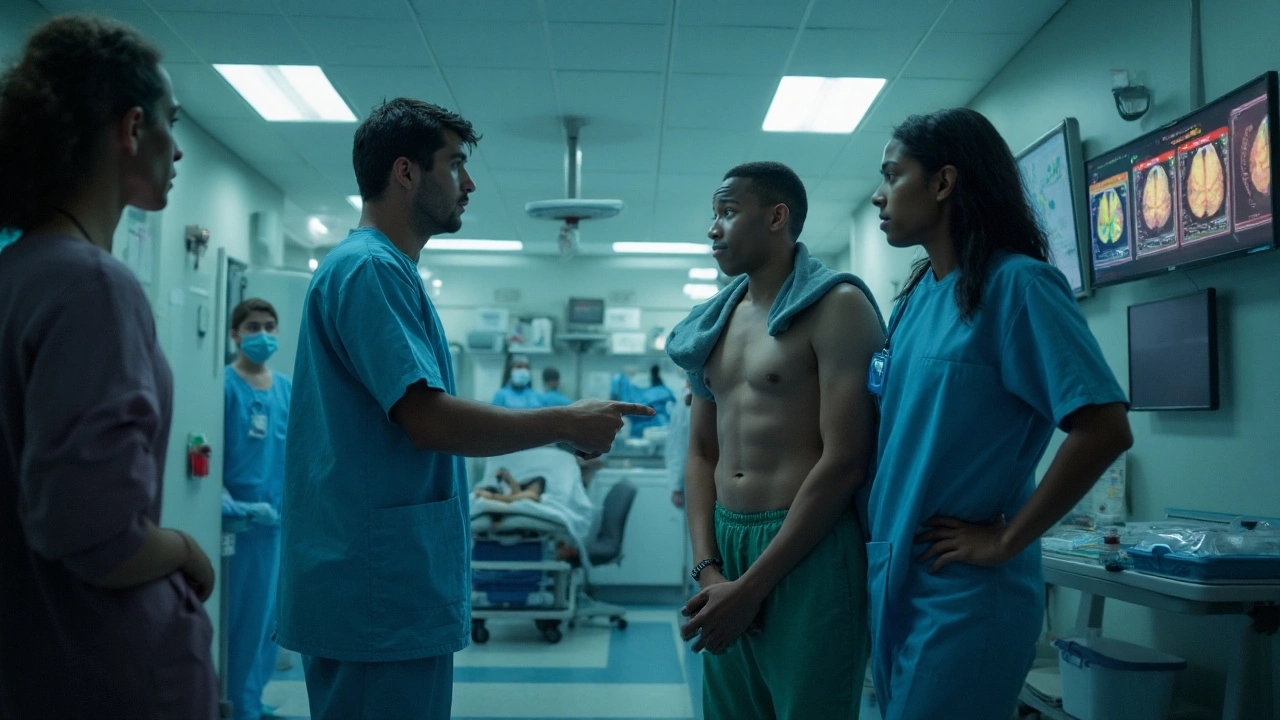
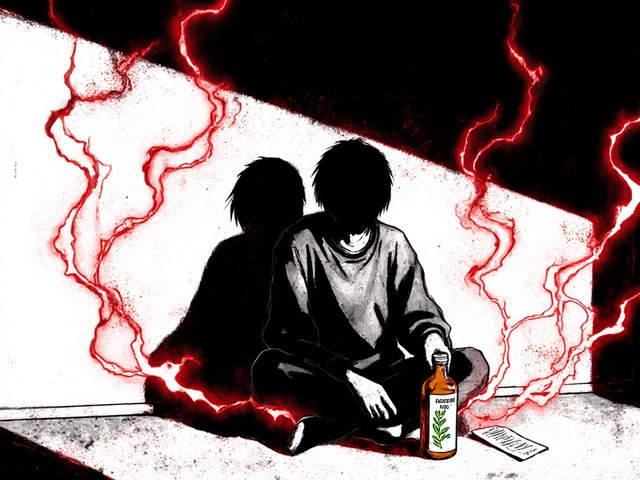
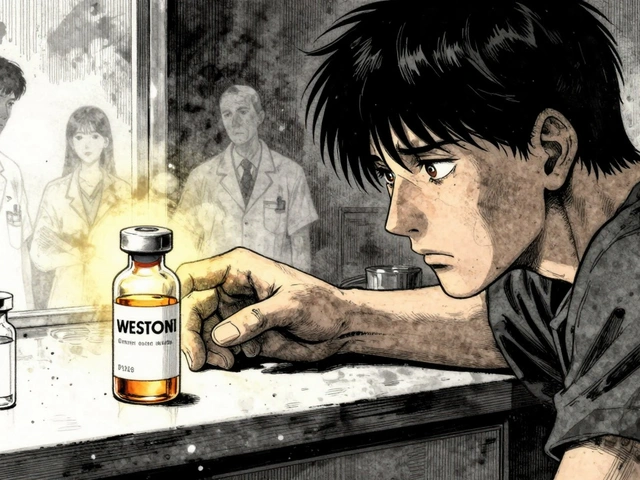



Kristen Magnes
September 6, 2025 at 22:03
This guide is a lifesaver. I just saw a case last week where a kid came in with a headache after swimming in a lake, and we almost missed it because we were thinking meningitis. Started amphotericin + miltefosine right away-thank you for the clear red flags. We got the PCR back in 36 hours, but we didn’t wait. That’s how you save lives.